#Nigerian Artifacts
Explore tagged Tumblr posts
Text
The Museum of Weapons Stolen from Benin

#The Museum of Weapons Stolen from Benin#Stolen Benin Bronzes#Sothebys#Allan Stone Art Thief#Nigerian Artifacts
3 notes
·
View notes
Text
"CHRISTINE" by BEN ENWONWU (1971)
Enwonwu produced some of his most accomplished works in the years directly following the end of the war, including the four known portraits of Adetutu Ademiluyi (known as Tutu), a Yoruba princess from the ancient Kingdom of Ife and this portrait of Christine. Painted just prior to Enwonwu’s famed portraits of the Yoruba princess, Christine is a clear precursor to these works. The present lot…

View On WordPress
#African Art#Art#artist#Nigerian artist#West African#west african art#West African history#yoruba art#Yoruba artifacts#Yoruba people
0 notes
Text
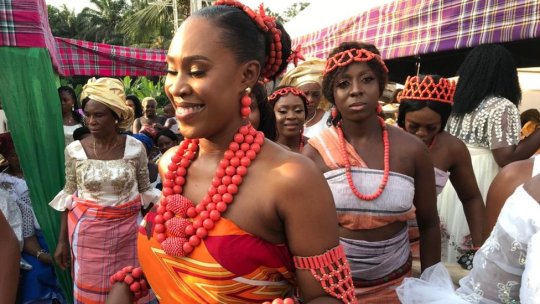
Igbo-Ukwu Archaeology
Glass production: Igbo-Ukwu has one of the oldest glass productions in West Africa. The archeology of Igbo-Ukwu had over 600 prestige objects including complex cast copper-alloy sculptures and more than 165,000 glass and carnelian beads. The most common glass among the 138 analytical results for Igbo-Ukwu beads is soda-lime glass produced using plant ash.Glass beads from Igbo-Ukwu
Igbo-Ukwu is a historically significant archaeological site located in southeastern Nigeria, in what is now Anambra State. The site is renowned for its remarkable discoveries of ancient artifacts that date back to the 9th and 10th centuries AD. The archaeological findings at Igbo-Ukwu have provided valuable insights into the early history and cultural achievements of the Igbo people and their interactions with other civilizations in the region. The artifacts may be associated with the traditional Kingdom of Nri and its priest-king, the Eze Nri.
The significance of Igbo-Ukwu lies in the following aspects: Sophisticated Artifacts: The excavations at Igbo-Ukwu revealed a collection of highly sophisticated and elaborately crafted artifacts, including intricately designed bronze, copper, and iron objects. These artifacts demonstrate the advanced metallurgical skills of the ancient Igbo people and their ability to work with various metals.
The Igbo-Ukwu artifacts predate certain other well-known Nigerian bronze sculpture traditions such as those of Ife and the Benin Kingdom and have contributed to our understanding of the development of metallurgical techniques in Africa.
Cultural Exchange and Trade: The presence of exotic materials like glass beads and imported ceramics at the Igbo-Ukwu site suggests that the people of Igbo-Ukwu were engaged in trade and had connections with other cultures and civilizations, both within and outside of Africa.
Evidence of Social Complexity: The intricate and finely crafted artifacts found at Igbo-Ukwu suggest the existence of a sophisticated and socially complex society. The level of craftsmanship and the variety of artifacts indicate the presence of skilled artisans and a hierarchical social structure.
Influence on Igbo Art and Culture: The artifacts discovered at Igbo-Ukwu have had a profound impact on the understanding and appreciation of Igbo art and culture. They have inspired contemporary Igbo artists and craftsmen and contributed to a sense of cultural identity and heritage.
Recognition of African Achievements: The discoveries at Igbo-Ukwu challenged the outdated notion of Africa as a continent with no significant history or cultural achievements. The site's findings have demonstrated the richness and complexity of ancient African civilizations. The archaeological site of Igbo-Ukwu was first discovered in 1939 when a group of villagers accidentally came across the artifacts while digging a trench. Subsequent excavations conducted in the 1950s and 1970s uncovered a wealth of cultural treasures. The Igbo-Ukwu artifacts are now housed in various museums, including the Nigerian National Museum in Lagos.
Overall, Igbo-Ukwu remains a vital archaeological site that continues to contribute to our understanding of ancient African civilizations and their contributions to human history. 9th Century Igbo-Ukwu face pendantDouble egg pendant, leaded bronze, 9th-10th century, unearthed in Igbo Ukwu, AnambraBronze ornamental staff head, 9th century, Igbo-Ukwu
Glass production: Igbo-Ukwu has one of the oldest glass productions in West Africa. The archeology of Igbo-Ukwu had over 600 prestige objects including complex cast copper-alloy sculptures and more than 165,000 glass and carnelian beads. The most common glass among the 138 analytical results for Igbo-Ukwu beads is soda-lime glass produced using plant ash.

#african#afrakan#kemetic dreams#africans#brownskin#afrakans#brown skin#african culture#igbo#ukwu#anambra#west africa#igbo culture#igbo history#afrakan spirituality
53 notes
·
View notes
Text
Promised myself a week long art break but I have thoughts on Majaaras's design that I wanna get down.
Character design is about communicating what a character does, and I want Majaaras's armor to communicate:
Not a barbarian, but raised and taught by this setting's equivalent to a slightly nicer Conan The Barbarian
Futuristic knight, but not too futuristic
scrappy brawler.
religious. Sworn to a blood/dawn goddess
And so far, my ideas on how to communicate those are:
"light" armor that is close to the body, but not too light. Focus on a big belt with a loincloth over the armor.
A mix of medieval and modern armor aesthetics
one arm covered in hand wraps covered in prayers. This would put emphasis on the lower arm, give him a "brawler" feel, and also serve as a religious artifact. Bonus points if he writes the prayers every day.
lots of red cloth and a red under armor.
I've also been looking into the Nigerian martial art Dambe as an inspiration for how Ulraste trained him, and in Dambe, the strong arm is wrapped in cord while the leading leg is wrapped in chain.
Also, I've been thinking of cutting off his arm. His backstory involves him being one of the few survivors of a magical plague that devastated a few settlements near what used to be Valcoth, and I figured that, by time the Knights Of Dunhallow found him, the sickness would've taken his arm and partially damaged his eyes.
6 notes
·
View notes
Text




6/2/2024 - We started today with a visit to the Lusaka National Museum. From ancient artifacts to an exhibit devoted to Kenneth Kaunda (the first president after Zambia’s 1964 independence), the museum was a rich experience. Our next stop was lunch at a nearby Nigerian restaurant where we shared scrumptious plates of jollof rice and beef suya. The rest of the day found us on our friends’ porch, enjoying their company and soaking up the perfect weather. Tomorrow we head to Cape Town, South Africa!
2 notes
·
View notes
Photo
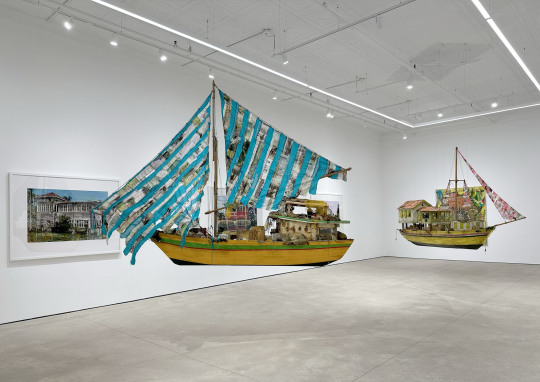
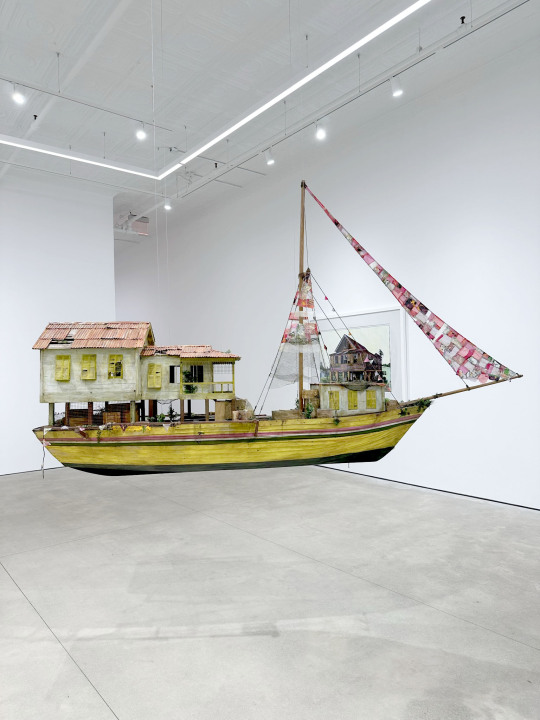
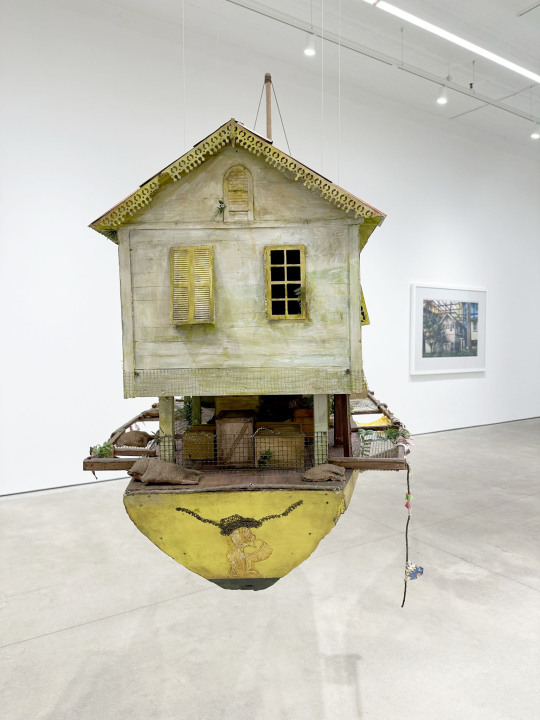
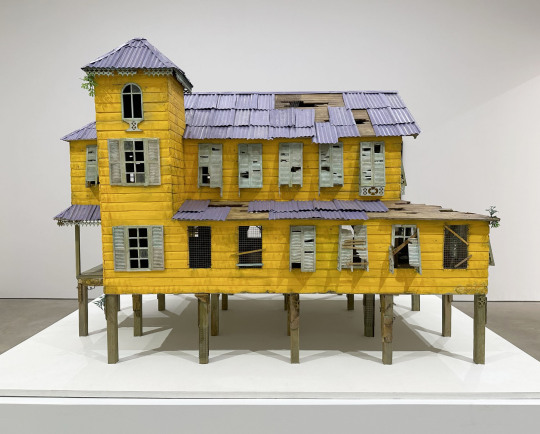
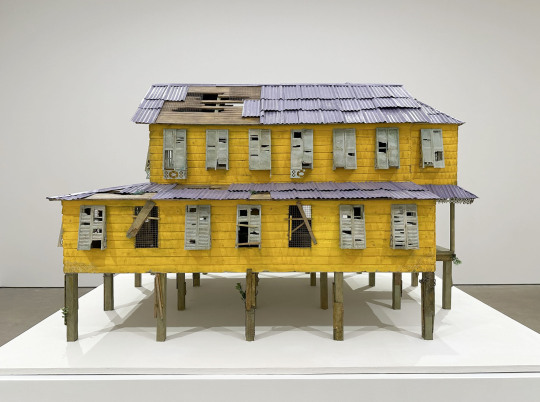
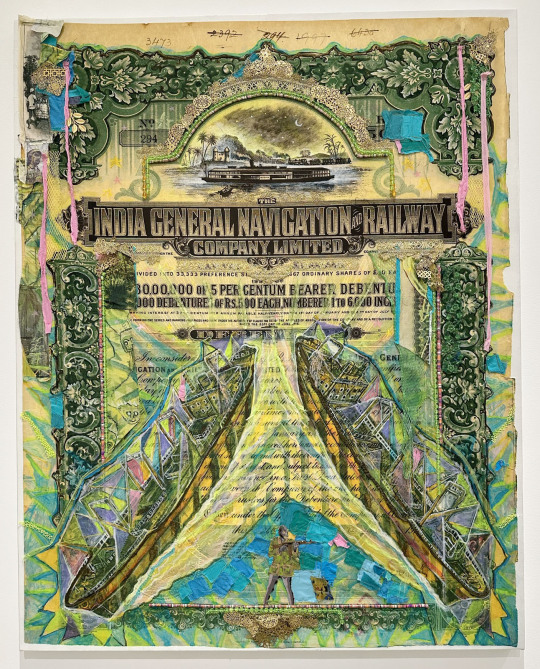


For Hew Locke’s exhibition, Listening to the Land, at P.P.O.W. he has created intricate sculptures and paintings that are fascinating in person.
From the press release-
Locke is known for exploring the languages of colonial and post-colonial power, and the symbols through which different cultures assume and assert identity. Furthering the themes explored in his celebrated commission The Procession at Tate Britain, and his concurrent installation Gilt on the façade of The Metropolitan Museum of Art, this exhibit engages with contemporary and historical inequities while reflecting on the landscape and history of the Caribbean. The exhibition draws its title from a poem by Guyanese political activist and poet Martin Carter which situates itself between two opposing forces of the landscape – sea and forest. Locke’s show features new sculptures and wall works with recurring motifs of stilt-houses, boats, memento mori, and share certificates referencing tensions between the land, the sea, and economic power. Reflecting on these links, Locke notes, “The land was created to generate money for colonial power, now the sea wants it back.”
Translating to ‘land of many waters,’ Guyana and its physical, economic, and political landscape serve as one of the primary sources for Locke’s work. Having spent his childhood in this newly independent nation, the artist witnessed first-hand an era of radical transformation. Now, the country teeters on the precipice of an oil boom and is one of the world’s fastest growing economies. Juxtaposing personal meditations on the climate crisis with political commentary on the history of a globalized world, Locke contemplates the ways in which colonies were exploited to accumulate capital, and observes how Guyana’s economic future lies in the exploitation of its waters. Locke’s new boat sculptures The Relic and The Survivor embody this broad worldview as the two battered wrecks drift through time and history. Evoking the fragmented and diverse legacies of the global diaspora, the boats’ patchwork sails are interspersed with photo transfers of 19th Century cane cutters and banana boat loaders, while their decks are loaded with cargo that could allude to colonial plunder, trade goods or personal belongings.
Based on an abandoned plantation house, Locke’s newest sculpture Jumbie House 2 features layered images that unveil the spirits that haunt this colonial vestige. Presented alongside are a series of painted photographs of dilapidated vernacular architecture across Georgetown and rural Guyana. Constantly under threat of being washed away by storms or rising sea levels, these crumbling structures echo anxieties surrounding climate change and historical erasure. A new series of mixed media wall works, Raw Materials, is derived from antique share certificates and bonds. Locke richly decorates the appliques with acrylic, beads, and patchwork to draw attention to the complex ways in which the past shapes the present. The image of an 1898 Chinese Imperial Gold Loan behind painted Congolese figures connects the global economy at the height of Empire to current Sino-African trade networks. In another work, a painted representation of a Nigerian Ife mask, alongside an image of David Livingstone, is layered on a French-African Mortgage Bond from 1923, connecting exploration and exploitation of African land, to current conversations surrounding the repatriation of artifacts. Taken together, the works in Locke’s Listening to the Land echo William Faulkner’s adage “The past is never dead. It’s not even past.”
This exhibition closes 4/1/23.
The Procession, mentioned above, can now be seen at Baltic Centre for Contemporary Art, in Gateshead, England until June 11th, 2023.
Gilt, also mentioned above, is on view at The Metropolitan Museum of Art until May 30th, 2023.
#hew locke#p.p.o.w#p.p.o.w gallery nyc#nyc art shows#sculpture#art installation#painting#guyana#baltic centre for contemporary art#the met#the metropolitan museum of art#uk art shows#art#art shows#models#photography#england art shows#gateshead#newcastle
15 notes
·
View notes
Text
The 2024 Pitch
Hi. I’m Talen Lee. It’s 2024. Let me tell you what you’ll see here. But first I need to talk to you about podcasts.
I listen to a lot of podcasts? Well, that’s not true. I listen to a small number of podcasts, but I listen to a lot of them. In 2023 I listened to 45 days of one podcast, and that podcast has absolutely no advertising and sponsorship, just supported by patrons on Patreon. That archive empty, I went to listen to another podcast, which does have ads, which means that in listening to this one podcast daily, I have listened to a lot of adverts for other podcasts. Podcast advertising is a special kind of hell where you get a 30 second audio spot with some music in which someone
Look yeah you clicked on the right link I’m doing something here, shut up
In which someone who you might recognise, but usually just some mediocre person with a media career access, tells you that hey, they’re making a podcast, and you should check it out because hahaaah, it’s a podcast! They’re there to talk about the subject, another subject, and another subject and whatever strikes their fancy.
I hate this.
I haaaate this.
I hate this because it betrays this ambiguity of purpose, and feels like the person in question isn’t really interested in what they’re talking about. I’m doing a podcast or whatever, y’know, come up with some reason to engage with this if my name recognition or my tone of voice doesn’t specifically do it on its own. It’s the worst kind of basic advertising that isn’t trying to connect a person with something they might want, it’s instead throwing the seeds into the wild with all the enthusiasm of a Nigerian Prince spam scam email, casting fistfuls of rotten seeds into the air in the hopes that they will land and arrive in a listener’s ear and at that perfect moment tell them: Ah, products exist.
It’s even more dire because in many cases these are podcasts that are essentially working as a kind of marketing product, a literal form of ‘content’ that an attract ‘an audience’ of ‘a demographic’ which means they can ‘monetise’ that content by sticking ads between the ‘content.’ True Crime podcasts are dire as a whole genre but that is at least a genre with a problem and that problem can be examined in terms of what the genre is doing and what it’s affecting.
This? This is just ‘I make content, and that content is a land of contrasts.’
Okay.
Then.
With that in mind.
Hi, I’m Talen Lee. I’m a game maker, games studies academic, game critic, and media studies graduate with an honours degree working on a PhD in board game making. I’m bisexual, I’m cis, I grew up in a cult. I think that people make games as cultural artifacts, I think there are more interesting ways to talk about games than as just commercial products, and I think that academic concepts are not beyond you, a casual or common audience who are tangentially interested in them. I have had students who have scraped through classes with minimal effort managing to wrap their heads around ideas like paratext agonic play, you can get there too, I’m confident.
Every day, there’s a new article posted on Press Dot EXE. What you’re going to find here fits broadly into these categories:
Games, from my perspective as someone who makes and loves games
Media, from my perspective as someone qualified in Media Studies
My experiences growing up with Fundamentalism
Like, that’s kind of it. Games, media and fundamentalism, that’s all I do. That takes a lot of different forms, of course.
I don’t like repeating on a topic too much. That means there are things I do with a mindset of ‘once a month’ – I try not to make a single subject too common, too often. To hit that goal, I try to limit myself to once-a-month articles about:
My original characters
My ‘original’ world for tabletop RPGs, Cobrin’Seil
Worldbuilding advice and guidance in general without a specific example
The franchises Transformers, Pokemon, and Magic The Gathering
I do write about D&D a fair bit, the two editions I know well, which are 3rd edition and 4th edition (which is the best edition). They get a slot each each month, and so does the special series How To Be, which describes a process for trying to make a particular character from pop culture media in the game system of 4th Edition D&D. I started this because I thought the complaints about 4e D&D being ‘inflexible’ or ‘like an MMORPG’ for character building didn’t make any sense to me, and then decided to show that you can translate a lot of different kinds of characters to that format.
Every week, I start the Monday with a piece on a media work, which I call Story Pile, and then the Friday, I publish an article on a game, which I call Game Pile. Every two weeks, the Game Pile article will be a video, and published on Youtube, and here!
Every even month, I use a theme to unite the content on the blog. That means if you like a particular type of content, it’s easy to look for in the archives. The themes and their corresponding months are:
February is Smooch Month, where I talk about romantic media
April is Talen Month, where I talk about things that matter to me personally
June is Pride Month, which is about queer media
August is Tricks Month, where I talk about magical tricks and illusions
October is Dread Month, where I look into horror and darker topics
December is Decemberween, a celebration of cool things I’ve seen through the year
That’s the goals for the year, with an aim for every article clocking in at one thousand words. I also aim to be better and more consistent about alt text this year – this is an example of a bad habit I’ve let fester for a long time, like not using categories and tags, and I intend to address it going forward.
That’s what you get here. You get media analysis. You get games. You get an ex-cultist thinking about things and a deliberate attempt to keep things from getting too repetitive and boring.
Where all good podcasts are sold.
Check it out on PRESS.exe to see it with images and links!
4 notes
·
View notes
Text
Digital Benin is a phenomenal new resource that collates information about thousands of incredible artifacts that were looted from the Benin kingdom in the 19th century.

Nigerian voices (including actual recordings) are prioritised in mediating how the resources are depicted. The site confronts the question of colonial theft head-on, integrates oral histories and knoweldge, and brings this treasure trove of objects back together in a way that has not been possible before - opening up new avenues for research, and holding institutions around the world to account for their holdings of stolen heritage artifacts.


34 notes
·
View notes
Photo

Are the Benin Bronzes Made From German Brass—And Does It Matter? On a humid February day in 1897, with smoke from relentless shelling hanging heavy in the royal city, the invading force advanced. More than a thousand British soldiers, bolstered by auxiliary troops, attacked the centuries-old seat of the forest kingdom, among the most powerful in West Africa. England would claim the military operation was retaliation for the killings of a few of its citizens after they violated the kingdom’s sovereignty. But in truth, it was a ruthless assault to vanquish the Kingdom of Benin and gain control of its wealth. By the time it was over, Benin City was in ashes. Amid the untold civilian casualties, destruction of homes, and other brutalities, the invaders looted thousands of royally-commissioned figures, masks, plaques, and other objects, some carved from wood or ivory but most cast in brass or bronze. Collectively known today as the Benin Bronzes, these treasures were hauled to the coast, loaded onto ships, and, eventually, made their way to some of the most famous museums and private collections in Europe and the United States. There, for more than a century, the Benin Bronzes were displayed, often without mention of their significance as religious or commemorative objects. More recently, as the importance of the Benin Bronzes as cultural heritage has been more broadly acknowledged, the magnificently detailed faces and intricate scenes of royal life have been at the center of often-heated political, cultural, and legal debates over repatriation and reparation for their violent theft. Now, there’s a new wrinkle in the story. Published today in the journal PLoS One, a novel geochemical analysis suggests that the raw material used in the production of Benin’s famous metalworks came from Rhineland, in western Germany. The findings are a scientific first, but the bigger question is: Does it matter where the metal came from? “I don’t think this is of enormous interest to the Edo people themselves. Where the material originally came from is a bit neither here nor there,” says Barnaby Phillips, journalist and author of Loot: Britain and the Benin Bronzes. (The term "Edo" can refer to both the historic kingdom of Benin, also known as the Benin Empire or Edo Empire, and the modern Nigerian state, located at what was the heart of the ancient kingdom; some experts prefer to use the term Edo to distinguish the kingdom and its people from the modern country of Benin, to the west of Nigeria.) Perhaps the most interesting thing about the paper is its method: The team compiled data from previously published analyses of metals used in objects considered Benin Bronzes, and compared those results with new analysis of something perhaps unexpected: artifacts retrieved from shipwrecks. Specifically, the team analyzed the composition of dozens of objects called manillas, retrieved from five shipwreck sites around the Atlantic and three archaeological sites in West Africa and Europe. Manillas are small, c-shaped pieces of brass that were manufactured in Europe and used by Portuguese traders as currency along much of the West African coast from the late 15th to the 19th century. All of the manillas analyzed in the study came from sites or shipwrecks, from Massachusetts to Sierra Leone, that had ties to Portuguese trade during this era. After comparing the previously published chemical signatures of the Benin objects with those of the manillas and an established database of European ores, the researchers concluded that “this study definitively identifies the Rhineland as the principal source of manillas.… Millions of these artifacts were sent to West Africa where they likely provided the major, virtually the only, source of brass for West African casters between the 15th and the 18th centuries.” It’s the first time anyone has tied the raw material ultimately used to produce the Benin objects to a specific geographic area—but a European origin for the material is not a surprise to scholars familiar with the Benin Bronzes. “A significant part of the metal that constitutes Benin bronze came from Europe. It’s only natural to start with the Portuguese connection [when researching its origin],” says Ndubuisi Ezeluomba, curator of African art at the Virginia Museum of Fine Arts in Richmond. Ezeluomba, who has written extensively about the objects from an arts management perspective, says he found the paper “exciting,” but would like to see more details. Despite the new paper’s emphasis on a German origin for the raw material Benin artists used, brass objects had been produced in West Africa long before European contact. While some regional metalworking traditions lasted for a century or two, the Kingdom of Benin’s casters were at work for at least 500 years, and possibly much longer. “What helped in the Benin case was it was under the control of the king, he was the sole patron at that time,” says Ezeluomba. “These were not objects made for the ordinary person. They were made to beautify the palace and decorate royal shrines. All the plaques you see were just like normal photographs, put on the palace wall to decorate them.” Despite its longevity—or perhaps because of it—the very roots of Benin’s bronze and brass casting tradition remain a mystery, and a source of contention between people in today’s Edo state and surrounding regions, notably the Yoruba people to the northwest, many of whom have ancestral ties to the ancient Ife Kingdom. The dates of manufacture for many of the items are also uncertain or contested. “There is a great historic rivalry between the Ife and Benin kingdoms, and there is a great deal of sensitivity as to which came first and which influenced the other,” says Phillips. “[But] the Ife civilization is producing these amazing objects, certainly predating contact with the Europeans.… Of course, Edo historians are adamant that their own metal casting tradition, be it bronze or brass, predates the arrival of the Europeans.” One thing researchers, historians, and curators alike agree on: “The arrival of the Europeans is a catalyst for expanded production,” says Phillips, adding that the sudden and substantial availability of brass, in the form of manillas, would have given the Benin artists much more material to work with. The paper’s lead author and designated media contact Tobias Skowronek declined interview requests for this story. Skowronek is a geochemist at the Technische Hochschule Georg Agricola in Bochum, near Dusseldorf and coincidentally close to the area where his team believes the raw material for the Benin Bronzes was mined. Some feel the new research may be less about a scientific breakthrough and more about researchers wanting to participate in some way in the broader discussion of the objects, currently a popular topic on social media and elsewhere. “The Benin Bronzes have become emblematic of the debate around colonial looted art for a couple of reasons. The first reason is that they are very fabulous, [and] the way in which they were taken was particularly egregious,” says Phillips. “And if you’re more or less anywhere between Seattle and Stockholm, there are Benin Bronzes in your nearest museum. So it has great resonance in different countries and has fitted into the postcolonial discourse.” It’s unclear what, if any, impact the new paper may have on ongoing political and legal maneuvering around efforts to return the artifacts to Nigeria. While museums in some countries, notably Germany, have already returned dozens of the objects or have committed to do so, some opposition continues. In 2022, the Restitution Study Group (RSG), which describes itself as a nonprofit concerned with slavery justice, launched a legal challenge to the Smithsonian Institution’s transfer of ownership of several objects to the Nigerian government. RSG’s argument is that the Benin Bronzes are culturally significant to descendants of enslaved people in the United States, and should remain accessible to them, because they were cast from melted-down manillas that Europeans traded with Benin nobility “in exchange for abducted and enslaved neighboring non-Beni people.” ("Beni" or "Bini" is another name for the language, also known as Edo, spoken in the kingdom.) While a judge denied RSG’s attempt to stop the transfer in October, the legal battle points to a question of much greater significance than where the metal in the Portuguese manillas was mined: “To put it crudely, to what extent were these [manillas] being traded for slaves?” says Phillips. The answer, based on historical evidence, appears to be that the Kingdom of Benin had fewer connections to the transatlantic slave trade than other regional kingdoms. “The history of how those things were removed, that’s what gets me.” Phillips notes that the forest kingdom, which was inland and not directly accessible to ships involved in the slave trade, had significant natural resources and industries, such as palm oil, ivory, and textiles. “I think Edo historians are on to something when they say their own kingdom was a lot more powerful than many of the other kingdoms that Europeans engaged with, and crucially had other things the Europeans wanted to buy,” he adds. While the links between the slave trade and the manillas melted down for the casters’ use remain uncertain and controversial, the brutality with which the Benin Bronzes were taken is incontrovertible. Ezeluomba, who grew up in modern Benin City, says he considers the objects as art, and studies them with professional detachment. However, he adds, “The history of how those things were removed, that’s what gets me. The sheer scale of the human casualties that these guys unleashed on Benin, the number of bullets that came out of those machine guns, those are the facts that actually get me.… It was very brutal. I always have that in the back of my mind.” For advocates of the return of the Benin Bronzes to what is now Nigeria, repatriation is a start, but only the first step in what must be a thoughtful process of remediation. Ezeluomba says it’s not just about returning the stolen goods to Benin City; Western museums, governments, and scholars should assist in infrastructure building, training, and other initiatives that will preserve the items for generations to come. Considered in this broader context, the question of whether the Benin Bronzes were cast from material mined in western Germany is a footnote. “If a Nigerian artist buys all their paints and canvas from Europe, is it European art?” Ezeluomba asks. “It’s not about the materials, it’s about who made the work.” https://www.atlasobscura.com/articles/benin-bronze-origins
8 notes
·
View notes
Text
Just finished Lockwood & Co book 4 where Lockwood and Lucy use spirit cloaks to survive the land of the dead, and it reminded me of something similar in the Bartimaeus books which is that - although the Bartimaeus books in particular are critical of British imperialism - non-Western cultures are still usually represented by historical artifacts and curiosities. The magicians are portrayed as greedy graverobbers while Lockwood's anthropologist parents are portrayed more kindly - there's the picture of them with the community in New Guinea where they got the spirit cloaks - but in both cases other cultures are really only present through their stuff. Holly Munro is described as having dark skin, but there's no specification beyond that. Might she be of Indian descent? Nigerian? Lucy's pov doesn't find that relevant.
It's outside the scope of the books, but I end up wondering what these other countries are up to. In Bartimaeus, Britain has tense relations with the Czech Republic and still has a grip on the American colonies despite it being in the early 2000s. Are they still occupying India? Did the Opium Wars go even worse for China? Or, as it's suggested many non-Western countries had more mutualistic relationships with spirits, maybe they were able to leverage that to resist the magicians somehow.
It also seems like no other country is getting as badly haunted as England in Lockwood & Co which is kind of funny. Fuck this island in particular.
#I get why Stroud did not feel like exploring the entire British empire in his middle grade series#but I'm curious#you KNOW if other cultures were chiller with spirits and used that to rebuff the magicians London would be churning out propaganda like#THEIR sinister warlocks selling their souls to demons for power#OUR noble magicians liberating their people with careful application of magic#lockwood and co
6 notes
·
View notes
Text
The Curse of Oba’s Treasure: A Legend of the Kingdom of Benin

At the heart of the ancient Kingdom of Benin, now part of modern Nigeria, lies a legend that combines history, mystery, and curse. The “Curse of Oba’s Treasure” is a story filled with hidden treasures, betrayals, and a spiritual vengeance that supposedly continues to this day. This legend is not only a cautionary tale, but also a window into the complex spiritual beliefs and traditions that shaped life in the Kingdom of Benin, one of the most powerful and culturally rich civilizations in West Africa.
The Kingdom of Benin: Power and Wealth The Kingdom of Benin, which flourished between the 13th and 19th centuries, was known for its advanced political organization, its bronze and ivory artworks, and its economic and military influence in the region. Ruled by a long dynasty of Obas (kings), Benin was a center of power and culture, with a belief system deeply rooted in respect for ancestors and the veneration of local gods.
Among the kingdom’s many legacies, the Oba’s Treasure is perhaps the most famous—and the most feared. Comprising priceless objects including bronze sculptures, carved ivories, and gold-encrusted jewelry, this treasure was guarded with great zeal and was seen not only as a source of material wealth but also as a spiritual link to the kingdom’s ancestors.
The Legend of the Curse The legend of the Curse of the Oba’s Treasure arose at a critical time in Benin’s history, when European colonial forces began to invade and plunder the kingdom’s riches. According to legend, Oba Ovonramwen, the last independent king of Benin, placed a powerful curse on his treasure to protect it from foreign marauders.
The curse, according to tradition, promised to bring death and misfortune to those who dared to steal the kingdom’s treasure. It is said that the spirits of the ancient Obas were summoned to guard the riches, with the warning that any attempt to remove the sacred artifacts would result in a series of misfortunes that would befall the thieves and their families for generations.
In 1897, when British forces invaded Benin and looted the royal palace, taking with them much of the treasure, reports began to emerge of unexplained misfortunes befalling the looters. Some soldiers and officers reported disturbing experiences, such as the sensation of being pursued by unseen forces, sudden illnesses, and mysterious deaths. These stories fueled belief in the curse, which gained traction as the looted objects began to spread around the world.
The Consequences of the Curse Accounts of people who suffered after acquiring or handling the artifacts looted from the Oba's Treasury continue to circulate. One of the most notable examples involves a British officer who, after bringing home a bronze mask from Benin, saw his family beset by a series of unexplained tragedies, including fatal illnesses and accidents.
Museums and collectors who acquired pieces of the treasure have also been caught up in the legend. There are stories of curators experiencing strange occurrences after displaying the artifacts, such as visitors falling unexplained or security systems failing for no apparent reason.
While many dismiss these stories as mere coincidences or superstition, fears of the curse persist. Some experts suggest that the reported negative experiences may be a manifestation of guilt or moral conflict over the ownership of stolen cultural artifacts.
The Lost Treasure and the Struggle for Repatriation Today, much of the Oba Treasure resides in European museums, where it continues to be the subject of controversy and demands for repatriation. The Nigerian government, along with descendants of the former Obas, has been fighting for the return of these artifacts, arguing that they are a vital part of the country’s cultural heritage and that their removal was a grave historical injustice.
The legend of the curse, though often met with skepticism, plays an important role in the narrative of this struggle. For many Nigerians, the return of the artifacts is not only a matter of historical justice, but also a necessary step to appease the troubled spirits guarding the treasure and to restore spiritual order to the Kingdom of Benin.
Final Thoughts The Curse of Oba’s Treasure is more than just a legend; it is a powerful metaphor for the consequences of colonization and cultural plunder. While the truth behind the curse remains a mystery, the story of Oba’s Treasure continues to resonate, evoking profound questions about ownership, justice, and the enduring legacy of one of Africa’s most impressive civilizations.
The mystery and reverence surrounding Oba’s Treasure remind us that even in a modern world, forces from the past, whether spiritual or cultural, continue to influence the present, challenging us to reconsider the meaning of heritage and our responsibility to it.
0 notes
Text
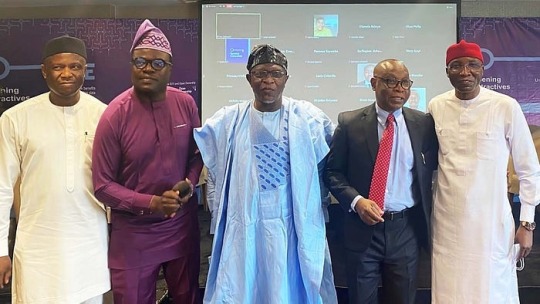
Unraveling Nigeria's Ownership and its Complexities
In this article, we delve into the intricate web of Nigeria's ownership, shedding light on the various aspects and entities associated with the country. Nigeria, known as the "Giant of Africa," is a nation rich in culture, resources, and diversity. To understand the concept of ownership in Nigeria, we must explore its historical, political, and economic dimensions.
Historical Context: Nigeria's Journey to Independence
Nigeria's journey to independence was marked by a tumultuous past, shaped by colonial rule and subsequent efforts to establish a sovereign nation. The British Empire held sway over Nigeria until October 1, 1960, when the country gained independence. The ownership of Nigeria was then transferred to the Nigerian people, who became the collective custodians of the nation's destiny.
The Federal Republic of Nigeria
As an independent nation, Nigeria operates under a federal system of government. The power is distributed among three tiers: the federal government, state governments, and local governments. The President serves as the head of state and the Commander-in-Chief of the armed forces, representing the federal government. However, it is essential to note that Nigeria's ownership is not vested solely in the President but in the Nigerian people as a whole.
Sovereign Wealth Fund and National Assets
Nigeria, being an oil-rich nation, possesses significant national assets and a Sovereign Wealth Fund (SWF) to manage its resources. The SWF serves as a savings fund for future generations, investing surplus revenues from oil sales. The ownership of the SWF and national assets is held collectively by the Nigerian government on behalf of its citizens.
Private Ownership and Business Entities
Beyond the realm of government ownership, Nigeria is a fertile ground for private enterprises and business ventures. Individuals, corporations, and foreign investors actively participate in various sectors of the economy, such as oil and gas, telecommunications, banking, agriculture, and manufacturing. Private ownership in Nigeria is subject to regulations and laws established by the government to ensure fair competition and economic growth.
Traditional Institutions and Cultural Ownership
Nigeria is home to a diverse range of ethnic groups, each with its distinct cultural heritage and traditional institutions. These institutions play a vital role in preserving cultural ownership within their respective communities. They serve as custodians of traditions, languages, customs, and historical artifacts, ensuring their continuity for future generations.
International Relations and Nigeria's Ownership
Nigeria's ownership extends beyond its borders through its participation in international organizations and treaties. As a member of the United Nations, African Union, and Economic Community of West African States (ECOWAS), Nigeria actively engages in shaping regional and global policies. These partnerships allow Nigeria to assert its ownership in various diplomatic, economic, and social spheres.
Conclusion
In conclusion, the concept of ownership in Nigeria is multifaceted and dynamic. While the Nigerian people collectively own the nation, the responsibilities of ownership are distributed across governmental, private, cultural, and international entities. Understanding the complexities of Nigeria's ownership requires an appreciation of its historical journey, political structures, economic systems, and cultural diversity.
#african#afrakan#kemetic dreams#africans#afrakans#brown skin#brownskin#african culture#nigeria#african union#west africa
2 notes
·
View notes
Text
Discover the Heart of Africa in Glasgow: A Culinary Journey at Afrikana Restaurant
When you think of Glasgow, images of historic architecture, vibrant arts, and a lively cultural scene come to mind. But nestled in the heart of this Scottish city is a gem that brings a taste of Africa to the locals and visitors alike — Afrikana Restaurant.
A Taste of Africa in the Heart of Glasgow
Afrikana Restaurant offers a unique dining experience that fuses traditional African flavors with modern culinary techniques. Located in the bustling neighborhood of Buchanan Street Afrikana stands out not just for its food but for its ambiance, hospitality, and commitment to authenticity.

What Makes Afrikana Special?
Authentic African Cuisine: Afrikana’s menu is a celebration of African diversity. From the spicy Jollof rice of West Africa to the rich and flavorful curries of East Africa, each dish is prepared with care, using ingredients that are true to their origins. Whether you’re craving a hearty Bobotie, a traditional South African meat dish, or the succulent Suya, a spiced Nigerian kebab, Afrikana promises a culinary journey across the continent.
Aesthetic Ambiance: The restaurant’s decor reflects the vibrant and colorful spirit of Africa. With earthy tones, tribal patterns, and artifacts that tell stories of African heritage, the setting at Afrikana is as much a part of the experience as the food itself. The cozy, warm lighting and friendly staff create an inviting atmosphere that makes you feel right at home.
Cultural Immersion: Afrikana is not just about food; it's about celebrating African culture. The restaurant often hosts live music events, featuring genres like Afrobeats and traditional drumming, which add to the immersive dining experience. You might also find art exhibitions or cultural performances that provide a deeper understanding of the diverse African traditions.
Innovative Fusion Dishes: While Afrikana stays true to traditional recipes, it also offers a twist with its fusion dishes. These creations blend African flavors with international influences, creating unique and tantalizing options for the adventurous palate. Imagine a burger with African spices or a pasta dish infused with rich, earthy flavors from the continent.
Catering to All Diets: Afrikana caters to a wide range of dietary preferences and restrictions. Whether you're vegan, vegetarian, or gluten-free, you’ll find plenty of options that do not compromise on flavor or authenticity. The chefs at Afrikana take pride in ensuring that everyone can enjoy a hearty meal that aligns with their dietary needs.

Signature Dishes You Must Try
Piri Piri Chicken: This iconic dish, marinated in a blend of African spices and grilled to perfection, is a must-try. Served with a side of spicy rice or creamy mash, it's a perfect balance of heat and flavor.
African Peanut Stew: A rich and creamy stew made with ground peanuts, sweet potatoes, and a blend of spices. It’s a comforting dish that is both hearty and satisfying.
Cape Malay Curry: A fragrant curry with a hint of sweetness, the Cape Malay Curry is a beautiful representation of South Africa’s culinary history. Served with fluffy rice and a side of sambals, it’s a dish that warms the soul.
Jollof Rice: This West African favorite, cooked with tomatoes, onions, and a blend of spices, is a flavorful dish that pairs perfectly with grilled meats or vegetables.
Malva Pudding: End your meal on a sweet note with this traditional South African dessert. The spongy cake soaked in a warm caramel sauce is served with a scoop of vanilla ice cream, offering a delightful conclusion to your culinary adventure.
Perfect for Every Occasion
Afrikana is more than just a restaurant; it's a venue for celebrations and gatherings. Whether you’re planning a birthday dinner, a family reunion, or a romantic date night, Afrikana provides the perfect setting. The spacious interior and friendly atmosphere make it ideal for both small and large groups.
For those who prefer to enjoy Afrikana’s offerings at home, the restaurant also provides an efficient takeaway service. You can savor the flavors of Africa from the comfort of your own dining table.
Visit Afrikana Restaurant Today
If you’re in Glasgow and looking to explore new culinary horizons, Afrikana Restaurant is a must-visit. With its commitment to authenticity, innovative menu, and welcoming ambiance, Afrikana promises a dining experience that you won’t soon forget.
So, come and discover the rich and diverse flavors of Africa at Afrikana Restaurant. It’s more than just a meal; it’s a journey into the heart of a continent known for its vibrant culture and delicious cuisine.
0 notes
Link
0 notes
Text
Traversing the enchanting landscapes through the cabs in Kolkata
Cab booking in Kolkata sets a whole new paradigm for urban commute – effortless amalgamation of sophistication into the city of bliss. They are not just carriers but have a wealth of information taking one through the amazing views of the city without any problems. Licensed drivers provide safety with well-regulated services. These outstation cabs from Kolkata are time efficient and available throughout the day with comfortable rides that have air conditioners inside them. Their door-to-door services are timely with an option for groups. They also are environmentally friendly.
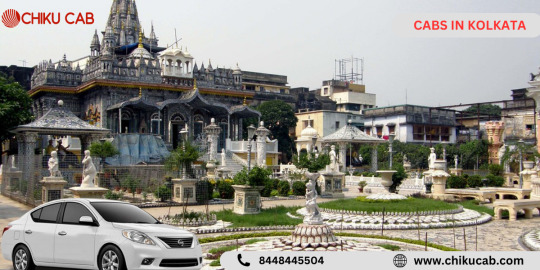
The exquisite views in Kolkata
1. Victoria Memorial: The Victoria Memorial located in Kolkata is a monumental marble structure dedicated to Queen Victoria; an icon for Kolkata. The building is set in a green environment and hosts an extremely rich museum, whose exhibits include collections of objects, paintings and sculptures of the colonial British period. An impressive edifice set with domes and statues that allow one to wander in history as they admire the finely cultivated surrounding lawns. Get a taxi in Kolkata from the railway station to reach the memorial.
2. Howrah Bridge: This Cantilever Bridge that connects Kolkata to Howrah is a marvel of engineering and a symbol of this place. Walking on the bridge during the setting of the sun is equally amazing as you are able to see how the Hooghly River glides in between life that thrives on its banks. When it is day-time and the river traffic flows underneath or when well lit at night, it creates a different charm for the city to be seen in the Kolkata cab, expressing its vitality and the city’s history.
3. Dakshineswar Kali Temple: This Hindu temple is situated along the eastern banks of the Hooghly River dedicated to the goddess Kali. It is a famous serene environment with a traditional style of building that attracts worshippers and travelers. The vibrant rituals and religious enthusiasm attract pilgrims and other visitors too. Therefore, Kali Temple becomes a culture and spirit refuge, combining the divinity with the slow movements of the river. The tourists usually hire the outstation cab service in Kolkatato get the blessings of Devi.
4. Indian Museum: The Indian Museum was formed in 1814 making it one of the first and biggest museums in India. The museum is home to one of the largest collections of artifacts including art, archaeology, anthropology and geology giving a peep look of the Nigerian culture and history. Book the Kolkata airport taxi service from the Kolkata airport to see this museum.
5. Park Street: Park Street is a hub of entertainment with luxurious restaurants and historical pubs that are common in the area. The place is an ideal destination to witness multicultural Kolkata with theater, shopping, and architectural remains from the times of colonization.
The perks of Kolkata cab
1. Time Efficiency: Taxi cabs in Kolkata offer convenient and expeditious means of traveling that otherwise would have taken much more time than using any other form of transport such as buses. This is quite convenient as they can take or depart from individuals at their preferred places which reduce travel time.
2. Convenience and Comfort: The cabs are more relaxing to the people who want to enjoy a leisure trip. By Comparator inside these vehicles, passengers will be able to travel through hot weather with comfort. Chiku cab offers convenient car hire in Kolkata at a pocket effective cost.
3. 24/7 Availability: There are cabs on 24-hour bases giving one reliable way in and out of this area irrespective of whether it is day or night time. It is especially ideal for night travel or persons traveling to or out of that city during uneasy times.
4. Safety and Security: In Kolkata, public cabs are quite safe as they are manned by registered drivers who offer legal trips. This guarantees safety for tourists and locals while moving in the city at large.
Conclusion
Finally, moving across the amazing localities in Kolkata taxi is pleasant and convenient that explains why people prefer this kind of transport. Cabs are one of the most convenient ways for exploring the stunning landmarks found in Kolkata. This goes on to improve the overall travel experience in the city by outstation car rental in Kolkata.
0 notes